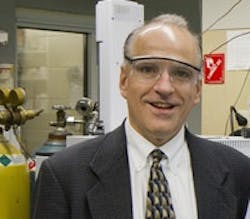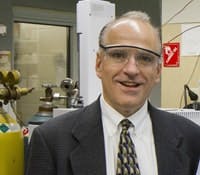Sulfur Spurs Methane Conversion to Ethylene
The promise of abundant long-term supplies of natural gas in the U.S. (“Prospects Brighten for Chemical Industry”) makes the idea of using the methane in the gas as a feedstock increasingly attractive. Dow Chemical, Midland, Mich., for one, has for several years sponsored work on direct conversion of methane into olefins (“Dow Aims to Gas Up Methane Conversion Efforts”). Researchers at the University of Virginia, Charlottesville, Va., and Northwestern University, Evanston, Ill., now have developed an approach that directly converts methane to ethylene. The key is the use of a “soft” oxidant, sulfur. Dow is supporting the work as part of its “Methane Challenge.”
VIRGINIA RESEARCHER
Figure 1. Matthew Neurock is working with scientists at Northwestern University on methane conversion. Source: Cole Geddy, University of Virginia Public Affairs.Methane long has served as a feedstock to make ethylene. However, conversion has required a high-capital-cost multi-step method — steam reforming of methane to synthesis gas followed by the Fischer-Tropsch process.Using oxygen to directly convert the methane poses significant pitfalls, including the propensity to produce carbon dioxide instead of methane, and the highly exothermal nature of the reactions, which presents heat management and reactor design issues, say the researchers. Relying on sulfur or other “soft” oxidants — ones with a weaker affinity for hydrogen — may avoid such issues, notes Matthew Neurock, a chemical engineering professor at Virginia (Figure 1). That’s because a soft oxidant significantly decreases carbon dioxide production and heat generation. The approach uses elemental sulfur as an oxidant over transition-metal sulfide catalysts already used by refiners. Experimental results indicate promising selectivity; methane conversion and ethylene selectivity increase substantially with rising temperature. More details appear in a recent article in Nature Chemistry.“The key challenge will be to increase the yield,” says Neurock. A significant boost in selectivity is likely, he adds. “We will be examining different catalysts, different operating conditions and also other soft oxidants.” However, he cautions: “This work is currently ongoing. Our findings are really very preliminary, though, and only show proof of concept.”
